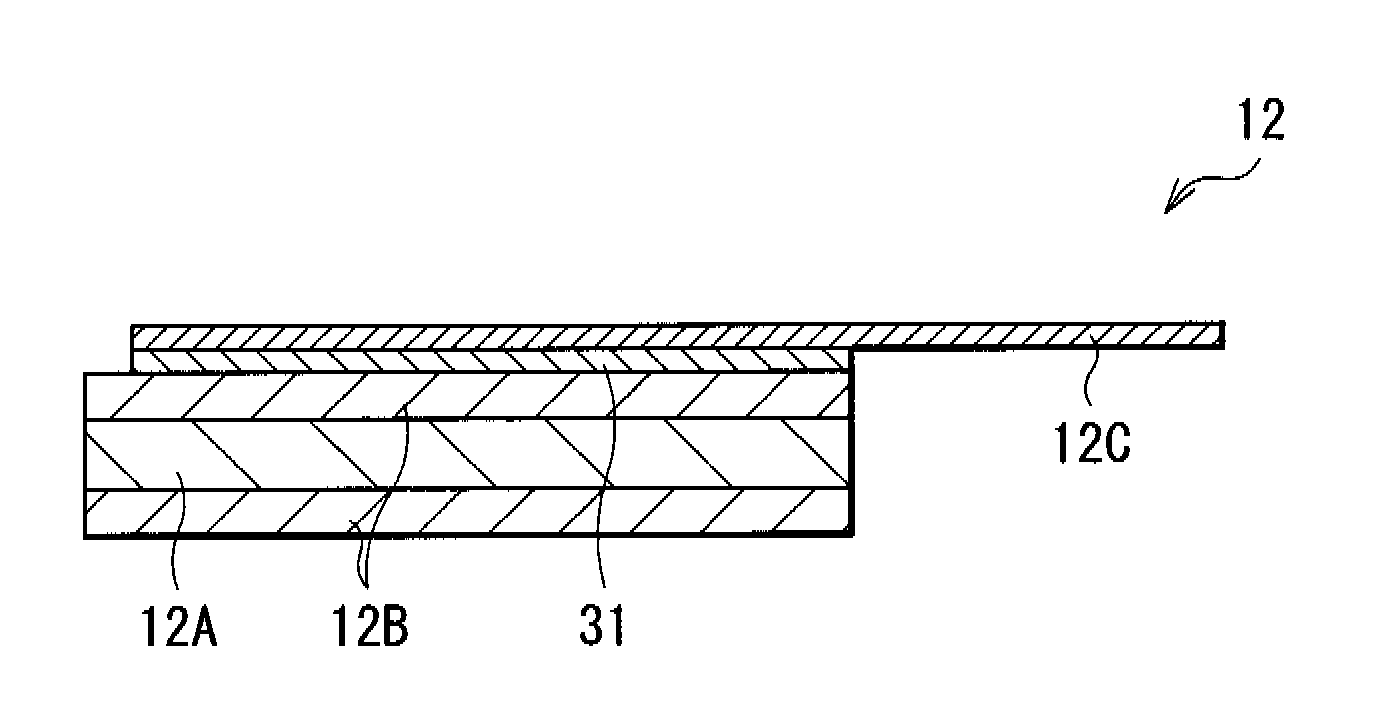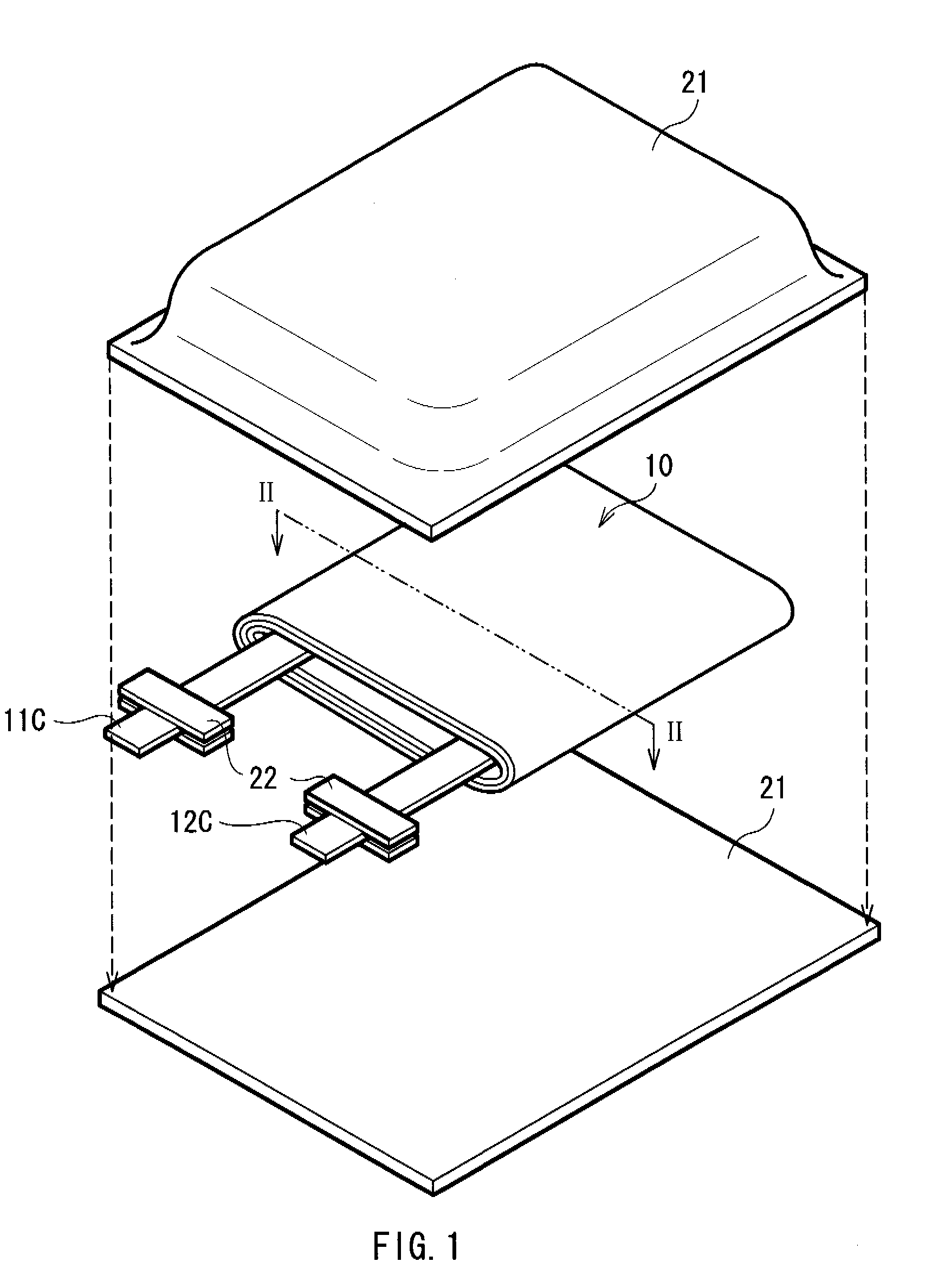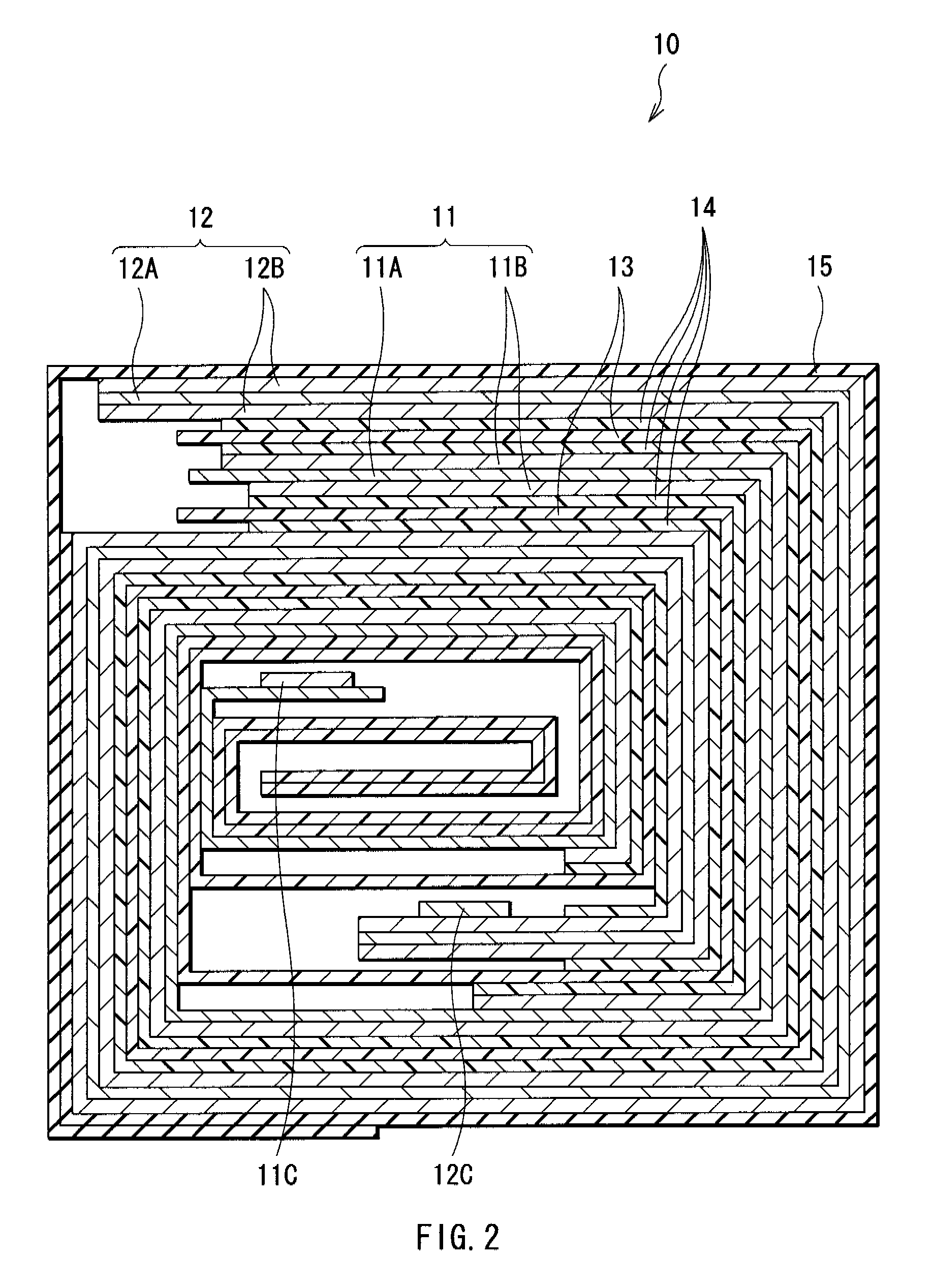Anode having an anode lead bonded to an active material layer, method of manufacturing of the anode, and battery including the anode
an anode lead and active material technology, applied in the direction of cell components, final product manufacturing, sustainable manufacturing/processing, etc., can solve the problems of lowering productivity, and method not practicable in manufacturing a battery electrode, so as to improve contact characteristics between the anode lead and the active material layer, lowering or fluctuating battery voltage, and preventing the increase of electrical resistance
- Summary
- Abstract
- Description
- Claims
- Application Information
AI Technical Summary
Benefits of technology
Problems solved by technology
Method used
Image
Examples
first embodiment
[0025]FIG. 1 shows a structure of a secondary battery according to a first embodiment of the invention. FIG. 2 shows a cross sectional structure taken along line II-II of a spirally wound electrode body shown in FIG. 1. The secondary battery is, for example, a lithium ion secondary battery, and has a structure that a flat spirally wound electrode body 10 is contained in a film package member 21.
[0026]The spirally wound electrode body 10 is obtained by layering and spirally winding a cathode 11 and an anode 12 with a separator 13 and an electrolyte layer 14 in between. The outermost periphery is protected by a protective tape 15.
[0027]The cathode 11 has a structure that an active material layer 11B is provided on a current collector 11A. The current collector 11A is made of, for example, aluminum, nickel, or stainless.
[0028]The active material layer 11B contains, for example, as a cathode active material, one or more cathode materials capable of inserting and extracting lithium (Li)....
second embodiment
[0059]FIG. 5 shows a structure of an anode lead of a secondary battery according to a second embodiment of the invention in the longitudinal direction thereof. The secondary battery has the same structure as that of the secondary battery described in the foregoing first embodiment, except that the anode lead 12C is bonded to the active material layer 12B with a bond 31 made of copper or an alloy containing copper. Therefore, for the corresponding components, descriptions will be given with the identical referential characters affixed thereto.
[0060]The bond 31 is preferably alloyed with the active material layer 12B in at least part thereof. Thereby, the contact characteristics can be more improved. Further, the bond 31 may be alloyed with the anode lead 12C in at least part thereof.
[0061]The anode lead 12C is made of, for example, nickel, an alloy containing nickel, iron, or an alloy containing iron.
[0062]The secondary battery can be manufactured in the same manner as that of the se...
example 1
[0064]First, the current collector 12A made of a copper foil with surface roughness of about Rz=2 μm being 18 μm thick was prepared. On the current collector 12A, the active material layer 12B made of silicon being 5 μm to 6 μm thick was formed by vacuum vapor deposition method using electron beam heating method (electron beam vapor deposition method). The electron beam deposition was made on condition that a crystal silicon ingot was used as a raw material, electron beam was used as an evaporation source, and atmosphere of 1×10−2 Pa or less was used. The deposition rate was 50 nm / sec.
[0065]Next, the anode lead 12C made of copper being 75 μm thick as shown in FIG. 3 was prepared. The anode lead 12C was bonded to the active material layer 12B in a manner that 5 points (10 spots) were bonded by two-spot resistance welding.
[0066]Further, 92 parts by weight of lithium cobaltate (LiCoO2) powder being 5 μm in an average particle diameter as a cathode active material, 3 parts by weight of ...
PUM
| Property | Measurement | Unit |
|---|---|---|
| surface roughness | aaaaa | aaaaa |
| thick | aaaaa | aaaaa |
| deposition rate | aaaaa | aaaaa |
Abstract
Description
Claims
Application Information
 Login to View More
Login to View More - R&D
- Intellectual Property
- Life Sciences
- Materials
- Tech Scout
- Unparalleled Data Quality
- Higher Quality Content
- 60% Fewer Hallucinations
Browse by: Latest US Patents, China's latest patents, Technical Efficacy Thesaurus, Application Domain, Technology Topic, Popular Technical Reports.
© 2025 PatSnap. All rights reserved.Legal|Privacy policy|Modern Slavery Act Transparency Statement|Sitemap|About US| Contact US: help@patsnap.com



